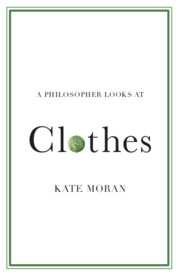Refine search
Actions for selected content:
110 results
13 - Liturgy, Icons, and Images
- from Part III - Liturgy and the Arts
-
-
- Book:
- The Cambridge Companion to Christian Liturgy
- Published online:
- 19 September 2025
- Print publication:
- 09 October 2025, pp 232-248
-
- Chapter
- Export citation
Chapter 6 - Friedrich Schiller
-
- Book:
- Freedom and Perfection
- Published online:
- 25 July 2025
- Print publication:
- 14 August 2025, pp 152-179
-
- Chapter
- Export citation
1 - Fashion, Function, and Fine Art
-
- Book:
- A Philosopher Looks at Clothes
- Published online:
- 08 May 2025
- Print publication:
- 05 June 2025, pp 1-25
-
- Chapter
- Export citation

A Philosopher Looks at Clothes
-
- Published online:
- 08 May 2025
- Print publication:
- 05 June 2025
Chapter 7 - Two Stories of Brave Mothers
-
- Book:
- Auerbach's Renaissance
- Published online:
- 24 April 2025
- Print publication:
- 24 April 2025, pp 184-215
-
- Chapter
- Export citation
2 - In the Image of Imelda
-
-
- Book:
- Cold War Asia
- Published online:
- 30 January 2025
- Print publication:
- 06 February 2025, pp 47-67
-
- Chapter
- Export citation
Chapter 24 - Eroticism
- from Part V - Gender, Sexuality, and the Body
-
-
- Book:
- Gerard Manley Hopkins in Context
- Published online:
- 16 January 2025
- Print publication:
- 16 January 2025, pp 210-216
-
- Chapter
- Export citation
Chapter 29 - Rhyme
- from Part VI - Form, Genre, and Poetics
-
-
- Book:
- Gerard Manley Hopkins in Context
- Published online:
- 16 January 2025
- Print publication:
- 16 January 2025, pp 253-260
-
- Chapter
- Export citation
Chapter 6 - Aesthetics and the Arts in Hume’s Essays
- from Part II - Philosophy
-
-
- Book:
- Hume's <i>Essays</i>
- Published online:
- 02 January 2025
- Print publication:
- 09 January 2025, pp 108-124
-
- Chapter
- Export citation
Metaphysical permanencies and variations on Medieval and Renaissance minor beauty
-
- Article
-
- You have access
- Open access
- HTML
- Export citation
Chapter 3 - Naturphilosophie and the Problem of Clean Hands
- from Part I - Hegel’s Philosophy of Nature in the Historical and Systematic Context
-
-
- Book:
- Hegel's <i>Philosophy of Nature</i>
- Published online:
- 19 December 2024
- Print publication:
- 12 December 2024, pp 58-75
-
- Chapter
- Export citation
Chapter 25 - Zadie Smith
- from Part IV - 1975–Present
-
-
- Book:
- The British Novel of Ideas
- Published online:
- 05 December 2024
- Print publication:
- 12 December 2024, pp 429-445
-
- Chapter
- Export citation

Evolutionary Aestheticism in Victorian Culture
-
- Published online:
- 05 December 2024
- Print publication:
- 12 December 2024
Robert Clewis on Kant and Aesthetic Normativity
-
- Journal:
- Kantian Review / Volume 29 / Issue 4 / December 2024
- Published online by Cambridge University Press:
- 27 January 2025, pp. 629-635
- Print publication:
- December 2024
-
- Article
- Export citation
8 - The Plurality of Values
-
- Book:
- Ethics and the Environment
- Published online:
- 29 November 2024
- Print publication:
- 28 November 2024, pp 154-179
-
- Chapter
- Export citation
Chapter 1 - Aesthetic Stairway
-
- Book:
- Guru Nanak's Transcendent Aesthetics
- Published online:
- 21 November 2024
- Print publication:
- 21 November 2024, pp 28-70
-
- Chapter
- Export citation
Values and facts and fancies
-
- Journal:
- Religious Studies , First View
- Published online by Cambridge University Press:
- 19 November 2024, pp. 1-12
-
- Article
-
- You have access
- Open access
- HTML
- Export citation
Chapter 15 - On Rereading Proust
- from Part III - On the Contemporary
-
- Book:
- The Possibility of Literature
- Published online:
- 10 October 2024
- Print publication:
- 05 September 2024, pp 308-339
-
- Chapter
- Export citation
Chapter 6 - Zadie Smith, E. M. Forster and the Idea of Beauty
- from Part I - On Writers
-
- Book:
- The Possibility of Literature
- Published online:
- 10 October 2024
- Print publication:
- 05 September 2024, pp 117-146
-
- Chapter
- Export citation
8 - Oscillations and CP Violation in Quarks
-
- Book:
- Introduction to Elementary Particle Physics
- Published online:
- 08 November 2024
- Print publication:
- 27 June 2024, pp 315-350
-
- Chapter
-
- You have access
- Open access
- HTML
- Export citation
